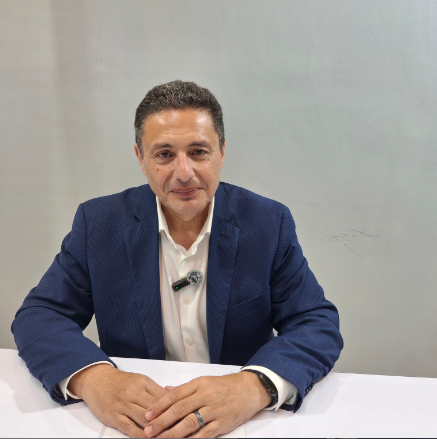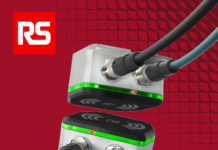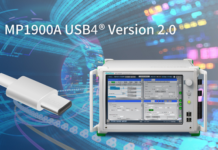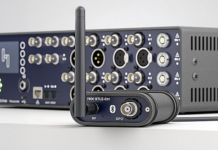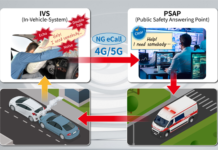In an exclusive interview with our Editor Pratibha Rawat at IMC 2025, Sameh Yamany, Chief Technology Officer, VIAVI talks about VIAVI’s network test and optimization solutions and advancements in 6G, Network Digital Twin, NTN, AI-RAN, quantum-safe and open networks to innovations in critical communications and how VIAVI is playing a leading role in enabling next-generation mission-critical networks.
1. As networks transition to 6G, AI-RAN will play a key role, please highlight the transformative potential of AI in Radio Access Networks (RAN)?
AI-RAN (Artificial Intelligence-powered Radio Access Network) is designed to enhance the performance and efficiency of 5G and 6G networks. By integrating AI-driven automation, real-time optimization and intelligent resource management, AI-RAN is poised to improve network capacity, reduce latency and enhance user experience. As networks transition to 6G, AI-RAN will play a key role in enabling ultra-reliable, low-latency connectivity for applications like autonomous systems, smart cities, and immersive extended reality (XR).
VIAVI has collaborated with the AI-RAN Alliance in advancing AI-native Radio Access Networks (RAN), to establish the first AI-RAN Alliance-endorsed lab. This strategic initiative is set to elevate the research and testing capabilities in the telecommunications industry, with a particular focus on integrating artificial intelligence into RAN technologies.
The AI-RAN Alliance lab is designed to empower its members by providing access to advanced tools and resources for research and testing. The lab will support efforts to develop and validate AI-native RAN solutions, facilitating groundbreaking progress in AI and telecommunications integration. This collaboration is expected to not only push the boundaries of what’s possible in AI-RAN but also accelerate the adoption of these transformative technologies in real-world applications.
AI RAN Scenario Generation
The move to Open RAN networks – and multi-vendor architectures – brings many benefits, such as enabling the development and deployment of sector-specific applications that can tailor network functionality for more targeted use cases. Because of the complexity of these niche applications, scenario testing is needed to ensure smooth and seamless operation of these networks.
VIAVI’s TeraVM AI RSG (AI RAN Scenario Generator) is an evolution of its market-leading RAN Intelligent Controller (RIC) test platform that maintains all its features while enhancing the simulated system-level RAN behaviour and creates a RAN digital twin to replicate real-world conditions in the lab. The AI RSG offers quality-of-service improvements, industry-specific features and functionality, energy efficiencies and other benefits for network operators. It achieves this by testing the effectiveness of app decisions in realistic network environments and harnessing data obtained through Open RAN interfaces to train the RIC and r/xApps. TeraVM can simulate up to 10,000 user equipment (UEs) – including movements, handovers and resource requests using imported real-world maps and networks – and between 1,000 and 5,000 cells per reference server.
2. In the quantum era, organizations are transitioning to post-quantum encryption. How can they stay ahead of risks and prepare for a quantum safe future?
Quantum computers have the potential to break public-key cryptography once they begin operating at a large scale. Governments, military, enterprises and mobile operators are preparing for a quantum-safe future to protect their vast storage of sensitive data.
There is a growing demand across all industries for a trusted validation platform that is essential for regulatory certifications and cross-domain technology deployment. VIAVI is uniquely positioned to support the quantum transition. Our quantum-safe testing suite offers a comprehensive platform for evaluating functionality, compliance, performance, and resilience of quantum-resistant technologies. Whether integrated into existing infrastructures or deployed in testbeds, VIAVI empower stakeholders to confidently assess and deploy quantum-safe systems.
The VIAVI MAP-300 is a modular, dense, and easily reconfigurable optical test platform with remote and automated capabilities. It effectively explores the limits of quantum in computing, networking, encryption, and cryptography. MAP-300 supports QKD impairment by creating flexible, reconfigurable photonic system that emulates a broad range of power and spectral loading scenarios representative of live production networks. This can be used to validate the performance or applicability of new QKD systems or sub-components.
VIAVI’s TeraVM security test is trusted by leading network security infrastructure vendors, service providers, research institutes, governments and enterprises to emulate large-scale user endpoint traffic applications over secure access connections, while measuring individual traffic flow performance across multiple quality vectors. TeraVM security test enables benchmarking of the performance of enterprise devices, content delivery networks and endpoints that initiate or terminate IPSec traffic using PQC. The TeraVM platform is in wide use by network equipment manufacturers, network operators and research institutes for its proven capabilities in testing security compliance as well as performance impacts of security layers.
3. How is the industry advancing on Open RAN and interoperability?
The Open RAN ecosystem is complex and the concept of flexible interoperability brings challenges for test and integration. Network operators need to validate that the technology all works together before it goes into the live network, which requires more than testing the interoperability of various vendor components. Operators also need to validate how the technology interacts with legacy equipment in the network, as well as how it responds to different user equipment environments.
VIAVI provides capabilities for testing both individual O-RU, O-DU, O-CU and RIC network elements, and full end-to-end open network validation. VIAVI has developed an end-to-end Open RAN portfolio encompassing robust test, verification and assurance solutions from RAN to Core that span the entire Open RAN lifecycle and we are working closely with CSPs and NEMs to help ensure interoperability, manageability, optimization and end-to-end performance of networks based on Open RAN architecture.
VIAVI has opened its Automated Lab-as-a-Service (VALOR) Open RAN testing facility which is funded by a grant from the U.S. National Telecommunications and Information Administration (NTIA). VALOR offers a fully automated, open and impartial Lab-as-a-Service / Test-as-a-Service suite for Open RAN interoperability, performance and security. VALOR brings together the NITRO wireless Open RAN test suite, the VAMOS (VIAVI Automation Management and Orchestration System) unified framework for hybrid physical and cloud lab testing, and technologies from industry-leading partners.
As far as Open RAN and 6G is concerned, energy efficiency, sustainability, and intelligent traffic control will be fundamental to the success of 6G, with AI-native RAN elements built into 6G standards. The VIAVI 6G Forward Program is working to synergize 6G and Open RAN through wireless technology research, innovation, and testing and through active participation in cross functional forums across the telecom landscape.
4. Please elaborate on 6G technology advancements. What role does digital twins in 6G play?
6G is set to significantly improve on the capabilities of existing networks, offering faster speeds, lower latencies and greater reliability than 5G. The standard aims to achieve data rates of up to 1 terabyte per second and enable near-instantaneous data transfers for a wide range of applications including autonomous vehicles, IoT and augmented reality (AR).
6G will be the first truly cloud-native network. The path to cloud-native 6G networks will need closer convergence and partnership with hyperscalers to equip operators with the infrastructure and expertise required to make the cloud a native network element. 6G with its new network and service orchestration solutions, combined with fully cloud-native principles and the advances made in AI/ML across all network functions will result in an unprecedented network automation and agility. The AI-assisted analytics service for 6G RAN and core can analyse data and uncover hidden trends, patterns, and insights in a more automated fashion.
The integration of artificial intelligence (AI) and machine learning within 6G networks – through technologies such as VIAVI’s NITRO AIOps enhances network management and optimize performance.
Digital Twins in 6G
Digital Twins will form a critical element in the research and development of 6G networks. The use of Digital Twins in 6G is vital to understand the performance of applications running on a 6G network without the risk of deploying in a live network. Combined with AI, these systems offer a powerful approach for modeling, simulating, and optimizing 6G communication systems.
Using a simulated environment to model changes to the network, can be made and executed in real time. This will improve efficiency and performance, enable new use cases and services, enhance network management, optimization, and security, automate decision making and problem solving, and in turn drive innovation and growth.
5. NTN is a key enabler of next generation digital infrastructure. How do VIAVI test solutions help in validating the performance of NTN networks?
NTN networks have moved from standardization to commercialization, allowing network operators to achieve the ubiquitous coverage necessary for critical communications. PNT services that are vital to the operation of critical infrastructure are increasingly susceptible to jamming and spoofing, and must be assured.
Satellite communication in 5G brings another level of complexity for testing. NTNs need to be reliable to cope with the distance, speed and mobility of both satellite, High Altitude Platforms (HAPs) and User Equipment (UE), while still delivering on performance. Test solutions are not only required to emulate different UE mobility and fading profiles, but they must also take the large doppler shifts from fast-moving satellites and airborne platforms into consideration.
To validate the base station prior to non-terrestrial deployment, VIAVI TM500 can emulate a high volume of devices, new mobility patterns, signal propagation delays, and other conditions unique to NTN while TeraVM emulates the core network. This test scenario is ideal for early functional tests such as 3GPP protocol testing and can be applied to both regenerative and transparent architectures.
Digital Twins bring enormous value when testing NTN prior to deployment. They act as virtual replicas allowing for simulation, analysis and optimization of network performance. They can essentially revolutionize satellite network testing by offering unprecedented insights, flexibility, and efficiency in ensuring the reliability and performance of satellite communication systems.
6. Recently VIAVI acquired Inertial labs. How does this acquisition help VIAVI in expanding capabilities in the positioning, navigation, and timing (PNT) sector?
Inertial Labs is a leading developer and supplier of high-performance orientation, positioning and navigation solutions for aerospace, defense and industrial applications. The company offers Inertial Measurement Units (IMU), Inertial Navigation Systems (INS), Assured Position Navigation and Timing (APNT), GNSS Tracking, LiDAR Scanning, Alternative Navigation (ALTNAV) and Visual Navigation solutions, which are highly complementary to VIAVI’s existing PNT and other aerospace and defense solutions. This acquisition positions VIAVI to leverage Inertial Labs expertise, enhancing its offerings and open up new opportunities into high-growth markets.



